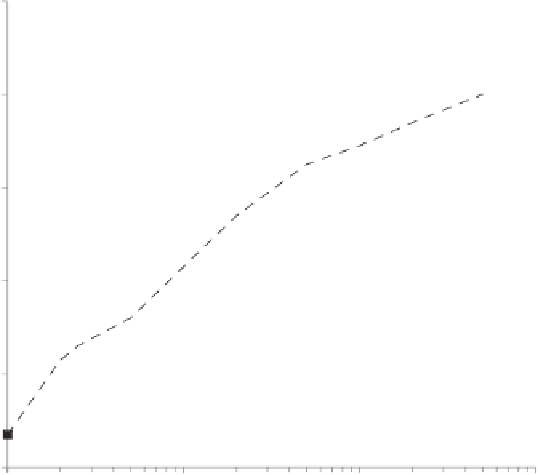Environmental Engineering Reference
In-Depth Information
100
95
90
85
Old motor
Prior NEMA EE
standard
NEMA EE/EPACT
NEMA Premium
80
75
1
10
100
1000
Horsepower
Figure 11.5
Comparison of standard-efficiency with high-efficiency electric motors manufactured under
several industrial standards developed by the National Electrical Manufacturers Association (NEMA).
Adapted from “Proposed new motor efficiency standards can save industry energy and money,” 2007b.
Eff1, Eff2, and Eff3 (Brook-Crompton, 2002). Figure 11.5 presents the average efficiency for
“old motors,” motors prior to NEMA EE standard, for the NEMA EE standard, and the NEMA
Premium standard. It is important to observe that efficiency increases with hp and that the
gap between low and high efficiencies decreases with increasing hp.
In many processes, machines need to operate at variable speed, for instance conveyor
belts, filling machines, fans, and pumps. Traditionally, the speed of mechanical devices has
been controlled with mechanisms based on friction or belts and pulleys. In the case of fluids,
variable flow has been attained with fixed speed fans or pumps and dampers or control valves
for air and liquids, respectively. These traditional methods of controlling speed (or flow) have
the disadvantage of wasting energy as a result of friction. Instead, a more efficient way to
control speed or a flow, is by varying the rotational speed of the motor that drives the device.
In alternate current, the rotational speed and torque of a motor can be controlled by varying
the frequency of the electricity supplied to the motor. This is accomplished with an electronic
device called variable speed drive (VSD), or variable frequency drive, which can control a
single-phase or a three-phase induction motor.
VSDs are effective at controlling pumps and fans. Power consumed by a fan or a pump
is proportional to the cube of the shaft speed. Instead of using throttling as a means of reducing
flow, a reduction of pump or fan speed will produce better results from the energy consump-
tion point of view and also from reducing the complexity and stress on the equipment.
A reduction of shaft speed of 10 percent produces a reduction of power consumption of
27 percent and 20 percent reduction of shaft speed translates into a reduction of power
consumption of 49 percent (WSU, 2003b).







































